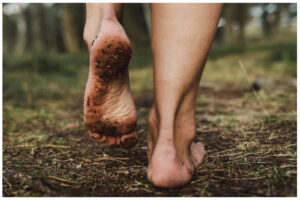For some unknown reason, September saw a slew of foot and ankle issues. My practice was awash in sprains, strains, bunions and post fracture rehabs. So in honour of all those foots and ankles, I thought to write a piece looking at this marvel that we take for granted – the human foot.
There are 26 bones, 33 joints, 29 muscles and multiple ligaments. This boggling architecture allows us the movement, stability and balance which we need to function as two leggeds. There are multiple myofascial slings which connect the foot to the rest of the body – these connections allow forces to be transferred and dissipated. It is nothing short of astounding that the tissues in the feet and ankle absorb and transfer hundreds of kilograms with each footfall. The plantar fascia and ligaments under the foot coupled with the small muscles in the foot contribute to the famed windlass mechanism which is essentially a spring which during walking and running returns vast amounts of energy to propel us forward. Think for a moment of what a life shod could do to that plantar fascia?
With this in mind… How many people train their feet? Or even acknowledge them? Relegated to the bottom of our body and often last to get any attention. They nevertheless lug us around all day long, often cramped in shoes – what one of my teachers calls sensory deprivation chambers. They get a bum deal and are ill prepared to deal with the loads that accost them.
The last observation links the feet powerfully to the lower back. The nerves which emanate from the holes (foramina) in the lumbar spine terminate in the skin and muscles, ligaments and fascias of the foot – providing us with rich communication between brain and foot. In my many years of practice I have seen so many chronic lower back problems and dysfunctional feet co-existing. Remember that symptoms of pain, stiffness and dis-mobility are a request or a nudge from your body to better prepare and take care of your frame. Strong feet = strong backs.
Some ideas for your marvellous feet:
- Remember your toes – wiggle them, grip with them, lift them, spread them
- Practice the short foot – scrunch the toes to increase the arch height then release the toes
- Do calf raises (start with 10 twice a day, and add 2-4 each week indefinitely)
- Practice one legged balance (aim for 20 seconds with eyes closed)
- Remember that the foot has to be seen as a part of the lower limb that it sits under
- Walk bare foot
- Do resistance exercise bare foot – don’t rely on shoes for stability
- Spend time on uneven surfaces – walk over rocks, grass pebbles and mud. Bare footed Boulder hopping down a stream could be considered the ideal neuro muscular rehabilitation for feet
- Squat and kneel
- Foot orthotics are to feet what braces are for lower backs. Instead of using supports consider consulting with someone for exercises to improve mobility strength and foot functionality

